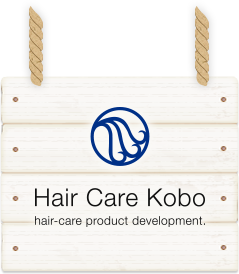Although they don't have the dyeing power of oxidation dyes, cosmetic hair coloring products have gradually become very popular. This is because they don't damage hair and the risk of developing a rash is very low. In addition, it is unnecessary to apply for approval so the period from planning to manufacture is short.
Demand is growing for hair manicures and cosmetic hair coloring items as products for beauty salons. This is thought to be because of the increased performance of hair manicures and a growing awareness of the risks damage to hair and rashes.
Furthermore, color treatments have seen a significant increase in demand as products destined for mail order and drugstores. The special feature of these products is that even in repeated use of the treatments they do no damage to the hair and there is a sense that the hair is naturally dyed. This is one of the biggest reasons for their acceptance into the marketplace.

Types of cosmetic hair coloring products
1. Manicures
Hair is impregnated on the inside with acid dyes using benzyl alcohol and ethanol and others. This dyes the hair. The color holds for around 2 - 4 weeks and there is little chance of rashes developing. If the color reaches the skin it is hard to remove, so it is necessary to take care.
2. Coloring treatments
These are products that use a mixture of basic dyes and HC dyes as coloring agents for the base of the treatment. When they are used repeatedly there is a sense of the hair treatment and each time the hair is gradually dyed. They are also popular as a replacement hair coloring treatment to compensate for color loss in hair that has had hair coloring or hair manicure products applied. In addition, one of the main features of these products is that it is possible to simply wash out with soap any color that has become attached to the skin.
3. Natural-based colors, such as henna and indigo
Henna includes orange, and indigo includes natural dyes which have a blue coloring. When using, the powder of these plants is mixed with water and the paste that results is applied to the hair. With just natural dyes, because there is a slight color variation, recently hybrid products have been created that mix these dyes with other dyes for cosmetics (such as HC dyes and basic dyes).
Furthermore, although you may see products that have mixed henna with oxidation dyes, these are miscellaneous goods that cannot be used on the human body. When using on humans there is a risk of a rashes, so please do not use in this way.
4. Temporary dyes
The strength of resins on the coloring agents, such as pigments, means that they can cover the whole surface of the hair. In this way they color the hair. They are also called temporary coloring products. They can be removed with one wash of shampoo so they are recommended for those looking for carefree coloring for fun. When they are being used partially, such as with a mesh, a mascara type is recommended. When they are being used for the whole of the hair, a spray (aerosol) type is recommended.



